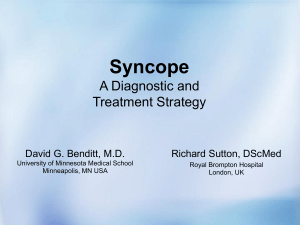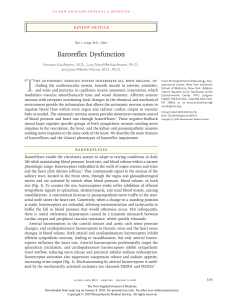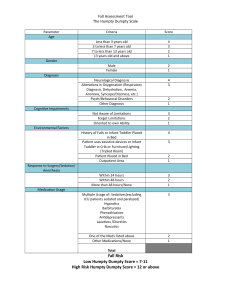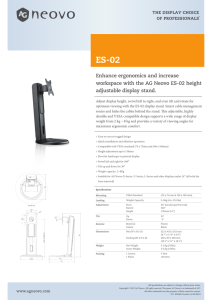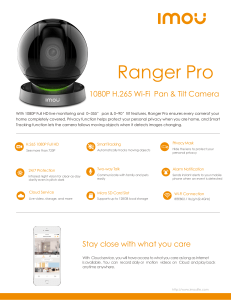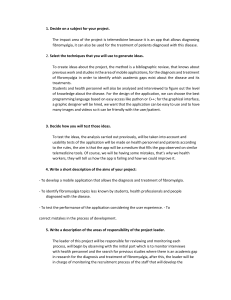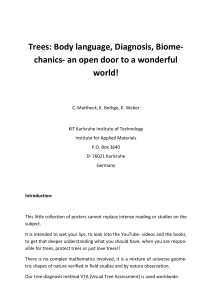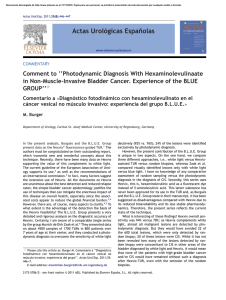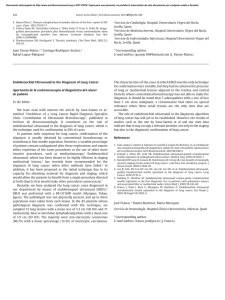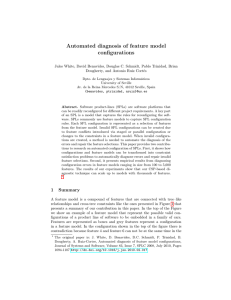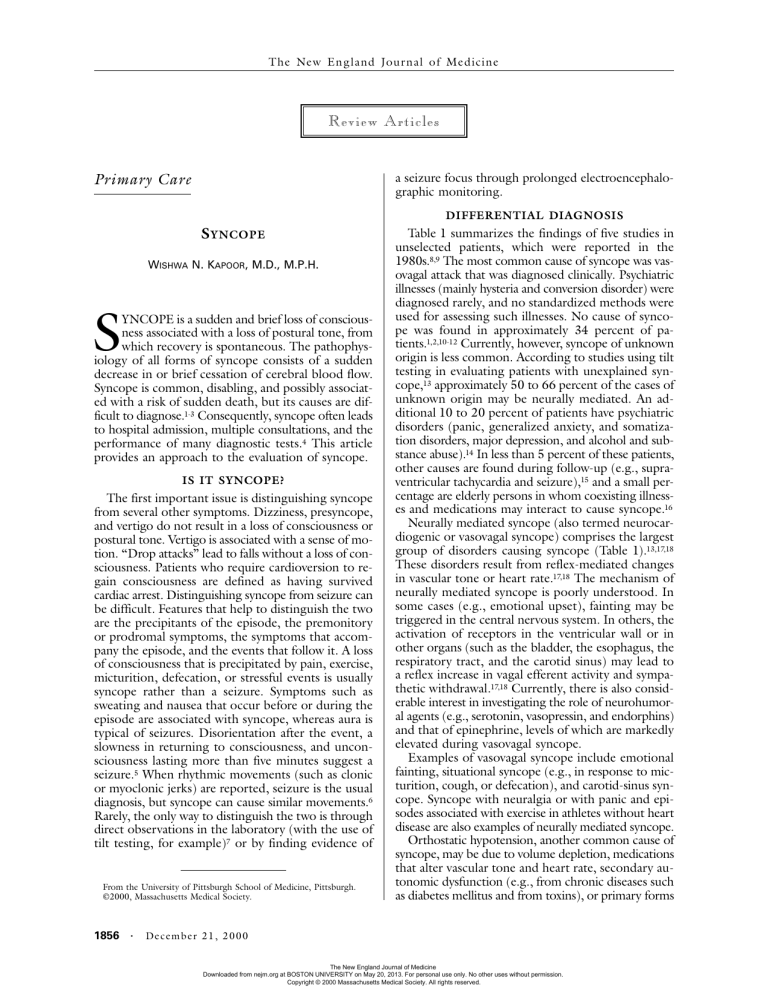
The Ne w E n g l a nd Jo u r n a l o f Me d ic i ne Review Articles a seizure focus through prolonged electroencephalographic monitoring. Primary Care DIFFERENTIAL DIAGNOSIS S YNCOPE WISHWA N. KAPOOR, M.D., M.P.H. S YNCOPE is a sudden and brief loss of consciousness associated with a loss of postural tone, from which recovery is spontaneous. The pathophysiology of all forms of syncope consists of a sudden decrease in or brief cessation of cerebral blood flow. Syncope is common, disabling, and possibly associated with a risk of sudden death, but its causes are difficult to diagnose.1-3 Consequently, syncope often leads to hospital admission, multiple consultations, and the performance of many diagnostic tests.4 This article provides an approach to the evaluation of syncope. IS IT SYNCOPE? The first important issue is distinguishing syncope from several other symptoms. Dizziness, presyncope, and vertigo do not result in a loss of consciousness or postural tone. Vertigo is associated with a sense of motion. “Drop attacks” lead to falls without a loss of consciousness. Patients who require cardioversion to regain consciousness are defined as having survived cardiac arrest. Distinguishing syncope from seizure can be difficult. Features that help to distinguish the two are the precipitants of the episode, the premonitory or prodromal symptoms, the symptoms that accompany the episode, and the events that follow it. A loss of consciousness that is precipitated by pain, exercise, micturition, defecation, or stressful events is usually syncope rather than a seizure. Symptoms such as sweating and nausea that occur before or during the episode are associated with syncope, whereas aura is typical of seizures. Disorientation after the event, a slowness in returning to consciousness, and unconsciousness lasting more than five minutes suggest a seizure.5 When rhythmic movements (such as clonic or myoclonic jerks) are reported, seizure is the usual diagnosis, but syncope can cause similar movements.6 Rarely, the only way to distinguish the two is through direct observations in the laboratory (with the use of tilt testing, for example)7 or by finding evidence of From the University of Pittsburgh School of Medicine, Pittsburgh. ©2000, Massachusetts Medical Society. 1856 · Table 1 summarizes the findings of five studies in unselected patients, which were reported in the 1980s.8,9 The most common cause of syncope was vasovagal attack that was diagnosed clinically. Psychiatric illnesses (mainly hysteria and conversion disorder) were diagnosed rarely, and no standardized methods were used for assessing such illnesses. No cause of syncope was found in approximately 34 percent of patients.1,2,10-12 Currently, however, syncope of unknown origin is less common. According to studies using tilt testing in evaluating patients with unexplained syncope,13 approximately 50 to 66 percent of the cases of unknown origin may be neurally mediated. An additional 10 to 20 percent of patients have psychiatric disorders (panic, generalized anxiety, and somatization disorders, major depression, and alcohol and substance abuse).14 In less than 5 percent of these patients, other causes are found during follow-up (e.g., supraventricular tachycardia and seizure),15 and a small percentage are elderly persons in whom coexisting illnesses and medications may interact to cause syncope.16 Neurally mediated syncope (also termed neurocardiogenic or vasovagal syncope) comprises the largest group of disorders causing syncope (Table 1).13,17,18 These disorders result from reflex-mediated changes in vascular tone or heart rate.17,18 The mechanism of neurally mediated syncope is poorly understood. In some cases (e.g., emotional upset), fainting may be triggered in the central nervous system. In others, the activation of receptors in the ventricular wall or in other organs (such as the bladder, the esophagus, the respiratory tract, and the carotid sinus) may lead to a reflex increase in vagal efferent activity and sympathetic withdrawal.17,18 Currently, there is also considerable interest in investigating the role of neurohumoral agents (e.g., serotonin, vasopressin, and endorphins) and that of epinephrine, levels of which are markedly elevated during vasovagal syncope. Examples of vasovagal syncope include emotional fainting, situational syncope (e.g., in response to micturition, cough, or defecation), and carotid-sinus syncope. Syncope with neuralgia or with panic and episodes associated with exercise in athletes without heart disease are also examples of neurally mediated syncope. Orthostatic hypotension, another common cause of syncope, may be due to volume depletion, medications that alter vascular tone and heart rate, secondary autonomic dysfunction (e.g., from chronic diseases such as diabetes mellitus and from toxins), or primary forms Dec em b er 2 1 , 2 0 0 0 The New England Journal of Medicine Downloaded from nejm.org at BOSTON UNIVERSITY on May 20, 2013. For personal use only. No other uses without permission. Copyright © 2000 Massachusetts Medical Society. All rights reserved. PRIMA RY CA R E TABLE 1. CAUSES OF SYNCOPE.* MEAN PREVALENCE (RANGE) CAUSE percent† Neurally mediated syncope Vasovagal attack Situational syncope Carotid-sinus syncope Psychiatric disorders Orthostatic hypotension Medications‡ Neurologic disease Cardiac syncope Organic heart disease§ Arrhythmias Unknown 18 5 1 2 8 3 10 (8–37) (1–8) (0–4) (1–7) (4–10) (1–7) (3–32) 4 (1–8) 14 (4–38) 34 (13–41) *Reproduced from Linzer et al. with the permission of the publisher.8,9 †Percentages are of patients with syncope. ‡Some of the patients receiving medication may have had neurally mediated syncope but are classified in this category because the studies did not specify it. §Organic heart disease refers to structural heart disease that causes syncope, such as aortic stenosis, pulmonary hypertension, pulmonary embolism, or myocardial infarction. of autonomic failure. A detailed discussion of orthostatic hypotension can be found elsewhere.19 THE IMPORTANCE OF HEART DISEASE In the evaluation of syncope, the presence of a structural heart disease (coronary artery disease, congestive heart failure, valvular heart disease, or congenital heart disease) has emerged as the most important factor for predicting the risk of death, as well as the likelihood of arrhythmias.20,21 Patients with heart disease or an abnormal electrocardiogram have an increased risk of death within one year, and most arrhythmias are found in these patients.20,21 Although the cardiac causes of syncope were shown in the 1980s to be associated with increased mortality and an increased risk of sudden death,1,2,10,11 recent evidence shows that underlying heart disease, irrespective of the cause of syncope, is the factor associated with an increased risk of death.21 DIAGNOSING THE CAUSE OF SYNCOPE A careful history taking and a physical examination are essential for the evaluation of syncope and may lead to or suggest diagnoses that can be evaluated with directed testing. Electrocardiography is recommended in almost all patients, despite its low yield, because the findings can lead to decisions about the immediate management of underlying disease (e.g., the implantation of a pacemaker for complete heart block) or can help in planning further testing (e.g., for bundlebranch block). Routine use of basic laboratory tests (measurement of electrolytes, blood counts, and tests of renal function and glucose level) is not recommended because of their low yield; these tests should be performed only when they are specifically indicated by the history and the physical examination.2,4 On the basis of the initial assessment (the history, the physical examination, and the electrocardiogram), the diagnostic evaluation should proceed as described below. Initial Assessment Leading to a Diagnosis The initial assessment may lead to a diagnosis. Examples of such diagnoses include clinical vasovagal syncope, orthostatic hypotension, situational syncope, drug-induced syncope, and complete atrioventricular block. In patients with a clear diagnosis at this stage, further assessment of the disease entity (e.g., determining the cause of orthostatic hypotension) may be planned and therapy may be started. Initial Assessment Suggesting a Diagnosis The initial assessment may suggest a diagnosis. For example, symptoms of pulmonary embolism may be present; there may be signs of aortic stenosis; associated palpitations may suggest supraventricular or ventricular tachycardia; and chest pain may suggest cardiac ischemia or myocardial infarction. Table 2 provides a representative list of findings that are clues to specific diagnoses. Examples of electrocardiographic findings include ischemia, a long QT interval, and bundlebranch block. In patients with a suggested diagnosis, specific testing is recommended to confirm or rule out the diagnosis and to aid in the planning of treatment (e.g., echocardiography or cardiac catheterization for aortic stenosis and lung scanning for pulmonary emboli). If the diagnosis is not confirmed, patients should be considered to have unexplained syncope. Unexplained Syncope When the initial evaluation does not lead to or suggest a diagnosis, the patient has unexplained syncope, and decisions about further testing should be based on an assessment of the patient’s risk factors. Patients with Structural Heart Disease or Electrocardiographic Abnormalities In patients with structural heart disease or abnormalities on the electrocardiogram, the chief concern is arrhythmias. If the presence of structural heart disease cannot be confirmed clinically (e.g., in elderly patients), if syncope is associated with exercise, or if there is known structural heart disease of undetermined severity, echocardiography and stress testing are recommended. Electrocardiographic monitoring for 24 hours is recommended, as is consultation with a specialist in cardiology or cardiac electrophysiology to plan the evaluation and management of disease in Vol ume 343 Numb e r 25 The New England Journal of Medicine Downloaded from nejm.org at BOSTON UNIVERSITY on May 20, 2013. For personal use only. No other uses without permission. Copyright © 2000 Massachusetts Medical Society. All rights reserved. · 1857 The Ne w E n g l a nd Jo u r n a l o f Me d ic i ne TABLE 2. CLINICAL FEATURES SUGGESTIVE OF SYNCOPE. SYMPTOM OR FINDING OF DIAGNOSIS Episodes occur after sudden unexpected pain, fear, or unpleasant sight, sound, or smell Episodes occur after prolonged standing at attention Episodes occur in a well-trained athlete without heart disease after exertion Episodes occur during or immediately after micturition, cough, swallowing, or defecation Syncope is accompanied by throat or facial pain (glossopharyngeal or trigeminal neuralgia) Episodes occur with head rotation or pressure on carotid sinus (due to tumors, shaving, or tight collars, for example) Episodes occur immediately on standing Patient takes medications that may lead to a long QT interval or orthostasis and bradycardia Syncope is associated with headaches Syncope is associated with vertigo, dysarthria, or diplopia Episodes occur with arm exercise Patient is confused after episode, or loss of consciousness lasts more than 5 minutes Differences are found in blood pressure or pulse between the two arms Syncope and murmur occur with changes of position (from sitting to lying, bending, turning over in bed) Syncope occurs with exertion Patient has a family history of sudden death Patient has a brief loss of consciousness with no prodrome and has heart disease Patient has frequent syncope with somatic symptoms but no heart disease SPECIFIC CAUSES TO BE CONSIDERED Vasovagal attack Vasovagal attack Vasovagal attack Situational syncope Neurally mediated syncope with neuralgia Carotid-sinus syncope Orthostatic hypotension Drug-induced syncope Migraines, seizures Transient ischemic attack, subclavian steal, basilar migraine Subclavian steal Seizure Subclavian steal or aortic dissection Atrial myxoma or thrombus Aortic stenosis, pulmonary hypertension, mitral stenosis, hypertrophic cardiomyopathy, coronary artery disease Long-QT syndrome, the Brugada syndrome Arrhythmias Psychiatric illness these patients. The relevant findings on electrocardiographic monitoring are symptoms that occur in conjunction with arrhythmias (pointing to arrhythmias as a cause) and symptoms that occur without accompanying arrhythmias (excluding arrhythmias as a cause). In the remaining patients, electrophysiologic studies are recommended. If the results of electrophysiologic tests are abnormal, a working diagnosis of arrhythmia should be made and treatment should be started. If the results are negative and symptoms suggest arrhythmic syncope, continuous-loop event monitoring is recommend1858 · ed because of the low sensitivity of electrophysiologic tests for bradyarrhythmias. Patients with recurrent syncope and negative electrophysiologic tests should also be evaluated for a possible neurally mediated syndrome, as described below. Patients with Normal Findings on Electrocardiography and No Heart Disease The majority of patients without heart disease have neurally mediated syncope, which includes carotidsinus syncope and various psychiatric illnesses (panic and anxiety disorders and major depression) that may predispose patients to neurally mediated reactions. Tilt testing is recommended in patients with recurrent syncope or severe episodes (those causing severe injury or motor vehicle accidents) as well as for patients in high-risk occupations (such as pilots). Carotid massage is also recommended in older patients because carotidsinus syncope is a disorder of the elderly. In patients with a carotid bruit or known cerebrovascular disease, carotid massage should be avoided, except when the diagnosis of carotid-sinus syncope is considered highly likely. In patients with frequently recurring syncope and other somatic symptoms, a psychiatric assessment is recommended. Patients with a single syncopal episode can be followed without further testing. Elderly patients are particularly difficult to evaluate, because they are susceptible to syncope as a result of the interaction of multiple coexisting illnesses, medications, and physiologic impairments due to aging.16 The initial approach to evaluating elderly patients should be to search for a single cause of syncope. If a specific cause cannot be identified, treatment of multiple abnormalities is recommended before invasive or extensive diagnostic testing is considered. Reassessment The steps outlined above will lead to a diagnosis in the majority of cases. In patients without a diagnosis, the entire approach should be reappraised once the evaluation has been completed. Reevaluation may include the retaking of a history and the interviewing of witnesses to obtain more detailed information about the episode. Further consultation with a neurologist may be needed if there are subtle neurologic symptoms or signs. Close follow-up of patients with syncope of unknown cause is recommended, and a complete reassessment should be undertaken if the patient has recurrences. DIAGNOSTIC TESTS A serious problem in the evaluation of syncope is the lack of a gold standard against which the results of diagnostic tests can be assessed. Thus, measurements of the sensitivity and specificity of these tests are often not possible.8,9 Since syncope is a symptom and not a disease, the diagnostic evaluation has focused on physiologic states that could plausibly cause a sudden Decem b er 2 1 , 2 0 0 0 The New England Journal of Medicine Downloaded from nejm.org at BOSTON UNIVERSITY on May 20, 2013. For personal use only. No other uses without permission. Copyright © 2000 Massachusetts Medical Society. All rights reserved. PR IMA RY CA R E loss of consciousness. This type of reasoning leads to uncertainty in the diagnosis unless pathophysiologic abnormalities are found during the occurrence of the episode, which happens rarely.9 Initial Assessment and Base-Line Laboratory Tests The history and the physical examination lead to the identification of a cause of syncope in 45 percent of patients.8 The history enables the physician to define an event as syncope and provides a description of the event to help in the diagnosis or in the formulation of a differential diagnosis. Relevant historical features include the precipitating factors (e.g., pain and anxiety), postural or exertional symptoms, the situations in which episodes occur (e.g., after urination), associated neurologic symptoms, a history of cardiac disease, a history of psychiatric illness, the medications being used, and a family history of sudden death; the history should also include a thorough review of systems (to uncover possible clues to psychiatric illness, for example). On physical examination, special attention should be paid to orthostatic hypotension, measurements of blood pressure in the two arms, and cardiovascular and neurologic signs. Orthostatic blood pressure should be measured three minutes after the patient stands up, following a supine period of five minutes. Table 2 lists various symptoms and findings that should trigger the consideration of specific diagnoses. Electrocardiograms commonly reveal abnormalities (such as bundle-branch block and old myocardial infarction) that can be clues to possible causes of syncope,2 but a cause is only rarely assigned on the basis of an electrocardiogram (in less than 5 percent of patients).1,2,8,9 Base-line laboratory tests (for electrolytes, renal function, blood sugar, and hemoglobin) rarely lead to an assignment of cause (in 2 to 3 percent of patients); the majority of patients with abnormal results on laboratory tests have seizures rather than syncope.1,2,8 Evaluation for Underlying Heart Disease A history, a physical examination, and an electrocardiogram are often sufficient to identify the presence of heart disease. Because structural heart disease is a strong predictor of mortality among patients with syncope, an echocardiogram, a stress test, or both are needed when the presence or absence of underlying cardiac disease cannot be determined clinically. Echocardiograms rarely reveal unsuspected abnormalities of cardiac function (in 5 to 10 percent of patients), and the discovery of such abnormalities does not necessarily lead to the diagnosis of a cause.22 Testing for Arrhythmias Arrhythmias are of concern in patients with structural heart disease or abnormalities on the electrocardiogram if there are symptoms suggestive of cardiac syncope (sudden brief loss of consciousness without a prodrome).20,23-25 The only certain way to include or exclude arrhythmias as a cause is to obtain a rhythm strip during syncope. The tests for arrhythmias include the following. Ambulatory Monitoring In studies of ambulatory (Holter) monitoring, symptoms are found to occur in conjunction with arrhythmias in 4 percent of patients (leading to a diagnosis of arrhythmic syncope), and symptoms occur without arrhythmias in 17 percent (potentially ruling out arrhythmic syncope).26 In 79 percent of patients, either brief arrhythmias or no arrhythmias are found.26 Arrhythmic syncope cannot be excluded in these patients, because arrhythmias may be episodic. Increasing the duration of monitoring to periods as long as 72 hours did not increase the yield for symptomatic arrhythmias.27 Continuous-Loop Event Monitoring Continuous-loop recorders are used for long-term monitoring (lasting weeks or months). The patient or an observer can activate the monitor after symptoms occur, thereby freezing in its memory the readings from the previous 2 to 5 minutes and the subsequent 60 seconds. In patients with frequently recurring syncope (a median of 15 to 30 episodes per patient), arrhythmias were found during syncope in 8 to 20 percent, and normal rhythm was found during symptoms in 12 to 27 percent.28,29 The limitations of this test are the need for compliance on the part of the patient and the potential for errors in using the device and problems with transmission.28,29 Recently, an implantable continuous-loop recorder that is inserted subcutaneously and has the capability of performing cardiac monitoring for up to 18 months was used in patients with recurrent syncope of undiagnosed cause.30 Among the 85 patients studied, 18 with bradycardia and 3 with tachycardia were identified when symptoms recurred a mean of 2.3 months after implantation.30 This method of monitoring is likely to be applicable in a small percentage of cases, but further studies are needed to define its role. Electrophysiologic Studies The yield of electrophysiologic tests depends on whether there is structural heart disease or an abnormal finding on the electrocardiogram. Among patients with heart disease, approximately 21 percent have inducible ventricular tachycardia and 34 percent have bradycardia (14 percent have multiple diagnoses).9 In patients with abnormal electrocardiograms (revealing conduction abnormalities), 3 percent have inducible ventricular tachycardia and 19 percent have bradycardia.9 In patients with a normal heart and a normal electrocardiogram, 1 percent have ventricular tachycardia and 10 percent have bradycardia.9 Electrophysiologic Vol ume 343 Numb e r 25 The New England Journal of Medicine Downloaded from nejm.org at BOSTON UNIVERSITY on May 20, 2013. For personal use only. No other uses without permission. Copyright © 2000 Massachusetts Medical Society. All rights reserved. · 1859 The Ne w E n g l a nd Jo u r n a l o f Me d ic i ne tests have poor sensitivity and specificity for bradyarrhythmias.31 Evaluation for Neurally Mediated Syncope The most common responses to tilt testing in patients with unexplained syncope are sudden hypotension, bradycardia, or both.13,17,18 Because the symptoms, the hemodynamic responses, and the release of catecholamines during tilt testing are similar to those during spontaneous vasovagal syncope, tilt testing is believed to provoke vasovagal syncope in susceptible persons. An American College of Cardiology expert consensus document has proposed methods and indications for tilt testing.32 Tilt tests generally involve the use of provocative agents such as isoproterenol or nitroglycerin.13,32-34 Among patients with unexplained syncope, positive responses with isoproterenol protocols are reported in approximately 66 percent.13,32-34 The results with the use of nitroglycerin appear to be similar.35,36 The specificity of most currently used tilt tests involving chemical stimulation approaches 90 percent.13,33,34,36,37 Carotid-sinus syncope is a variety of neurally mediated syncope.17 It should be considered in patients with spontaneous symptoms suggestive of carotidsinus syncope (e.g., syncope while shaving or while turning the head) and in elderly patients with recurrent syncope and a negative diagnostic evaluation. The methods of carotid massage and the criteria for abnormal results are described elsewhere.38 Neurologic deficit after carotid massage is rare (occurring in 0.28 percent of patients in one large study).39 Neurologic Testing An electroencephalogram provides diagnostic information in less than 2 percent of cases of syncope.2,40 Almost all these patients have symptoms suggestive of a seizure or a history of a convulsive disorder. Computed tomographic (CT) scans of the head provide new diagnostic information in 4 percent of cases.1,2 Almost all of these patients have focal neurologic findings or a history consistent with a seizure. Transient ischemic attacks involving the carotid or vertebrobasilar arteries rarely result in syncope. Drop attack is more often a symptom of vertebrobasilar ischemia. There are no studies demonstrating the usefulness of transcranial or carotid Doppler studies in evaluating syncope. These tests are not recommended unless the patient has neurologic symptoms or signs of transient ischemia. Psychiatric Evaluation Generalized anxiety disorder, panic disorder, and major depression may cause syncope by predisposing patients to neurally mediated reactions.14 Fainting is a known manifestation of somatization disorder and in rare cases may represent a “psychogenic” response on tilt testing.41 Alcohol and drug dependence and abuse can also lead to syncope. Patients with syncope 1860 · due to psychiatric disorders are generally young, have no heart disease, and have frequently recurring syncope.14 HOSPITALIZATION In some instances, patients should be hospitalized for the rapid identification of the cause of syncope or for treatment when the cause is already known. The recommendations for hospital admission are based on the potential for adverse outcomes if the evaluation is delayed, although no studies have focused on this issue. Patients should be hospitalized for diagnostic evaluation if they have structural heart disease, symptoms suggestive of arrhythmias or ischemia (palpitations or chest pain), or abnormal electrocardiographic findings (Table 3). Patients should be hospitalized for treatment if they have certain forms of heart disease (e.g., aortic stenosis and hypertrophic cardiomyopathy), severe orthostasis, or adverse drug reactions. Patients deemed likely to have neurally mediated syncope and those who do not have heart disease or an abnormal electrocardiogram can be evaluated as outpatients. TREATMENT There have been very few randomized trials of treatment for neurally mediated syncope. A randomized trial of atenolol showed reduced symptoms after one month of treatment,42 and a trial of paroxetine showed a reduced rate of recurrence after two years of treatment.43 A European randomized trial using etilefrine, an a-adrenergic agonist with vasoconstrictor properties, did not find an effect of treatment.44 Case series have used salt plus fludrocortisone or have used metoprolol, midodrine, disopyramide, theophylline, or other drugs, but the effectiveness of these medications cannot be determined because of the lack of controls. A randomized trial using permanent pacemakers, which provided pacing at a high rate if a predetermined drop in the heart rate occurred, in patients with severe symptoms (six or more episodes in their lives) and bradycardia on tilt testing showed an 85 percent reduction in the relative risk of recurrent syncope.45 Further randomized trials are needed to determine appropriate drug therapy and to define the role of pacemakers in vasovagal syncope. The treatment of patients with orthostatic hypotension should include volume replacement when the patient has intravascular volume depletion and the discontinuation or reduction of the doses of drugs that may be responsible for orthostasis. In cases of autonomic failure, increasing the intake of salt and fluid and using waist-high support stockings and abdominal binders may be beneficial. Fludrocortisone is the drug of first choice for patients with autonomic failure. Drugs such as midodrine that increase peripheral resistance also appear to be beneficial. The treatment of patients with structural cardiac Decem b er 2 1 , 2 0 0 0 The New England Journal of Medicine Downloaded from nejm.org at BOSTON UNIVERSITY on May 20, 2013. For personal use only. No other uses without permission. Copyright © 2000 Massachusetts Medical Society. All rights reserved. PR IMA RY CA R E TABLE 3. REASONS FOR HOSPITALIZATION OF PATIENTS WITH SYNCOPE. Admission for diagnostic evaluation Structural heart disease Known coronary artery disease Congestive heart failure Valvular or congenital heart disease History of ventricular arrhythmias Physical findings characteristic of heart disease (e.g., findings characteristic of aortic stenosis) Symptoms suggestive of arrhythmias or ischemia Syncope associated with palpitations Chest pain suggestive of coronary disease Exertional syncope Electrocardiographic abnormalities Ischemia Conduction-system disease (e.g., bundle-branch block and first-degree atrioventricular block) Unsustained ventricular or supraventricular tachycardia Prolonged QT interval Accessory pathway Right bundle-branch block with ST-segment elevation in leads V1, V2, and V3 Pacemaker malfunction Neurologic disease New stroke or focal neurologic findings Admission for treatment Structural heart disease Acute myocardial infarction Pulmonary embolism Other cardiac diseases diagnosed as causing syncope Orthostatic hypotension Acute, severe volume loss (e.g., dehydration and gastrointestinal bleeding) Moderate-to-severe chronic orthostatic hypotension Older age Treatment of multiple coexisting abnormalities Discontinuation of offending drug or modification of dose Drugs causing torsade de pointes and a long QT interval Adverse drug reaction such as anaphylaxis, orthostasis, or bradyarrhythmias diseases, arrhythmias, neurologic conditions, and other disorders causing syncope are beyond the scope of this review. In conclusion, strategies for the evaluation of syncope use directed testing and lead to potential diagnoses in the majority of patients. Because the diseases that may cause syncope span multiple specialties, it is prudent for the primary care physician to work collaboratively with relevant specialists to devise an optimal evaluation and management plan for each patient. REFERENCES 1. Day SC, Cook EF, Funkenstein H, Goldman L. Evaluation and outcome of emergency room patients with transient loss of consciousness. Am J Med 1982;73:15-23. 2. Kapoor W. Evaluation and outcome of patients with syncope. Medicine (Baltimore) 1990;69:160-75. 3. Linzer M, Pontinen M, Gold DT, Divine GW, Felder A, Brooks WB. Impairment of physical and psychosocial function in recurrent syncope. J Clin Epidemiol 1991;44:1037-43. 4. Kapoor WN, Karpf M, Maher Y, Miller RA, Levey GS. Syncope of unknown origin: the need for a more cost-effective approach to its diagnostic evaluation. JAMA 1982;247:2687-91. 5. Hoefnagels WA, Padberg GW, Overweg J, van der Velde EA, Roos RA. Transient loss of consciousness: the value of the history for distinguishing seizure from syncope. J Neurol 1991;238:39-43. 6. Lempert T, Bauer M, Schmidt D. Syncope: a videometric analysis of 56 episodes of transient cerebral hypoxia. Ann Neurol 1994;36:233-7. 7. Grubb BP, Gerard G, Roush K, et al. Differentiation of convulsive syncope and epilepsy with head-up tilt testing. Ann Intern Med 1991;115: 871-6. 8. Linzer M, Yang EH, Estes NA III, Wang P, Vorperian VR, Kapoor WN. Diagnosing syncope. 1. Value of history, physical examination, and electrocardiography: Clinical Efficacy Assessment Project of the American College of Physicians. Ann Intern Med 1997;126:989-96. 9. Idem. Diagnosing syncope. 2. Unexplained syncope: Clinical Efficacy Assessment Project of the American College of Physicians. Ann Intern Med 1997;127:76-86. 10. Silverstein MD, Singer DE, Mulley AG, Thibault GE, Barnett GO. Patients with syncope admitted to medical intensive care units. JAMA 1982; 248:1185-9. 11. Martin GJ, Adams SL, Martin HG, Mathews J, Zull D, Scanlon PJ. Prospective evaluation of syncope. Ann Emerg Med 1984;13:499-504. 12. Ben-Chetrit E, Flugelman M, Eliakim M. Syncope: a retrospective study of 101 hospitalized patients. Isr J Med Sci 1985;21:950-3. 13. Kapoor WN, Smith MA, Miller NL. Upright tilt testing in evaluating syncope: a comprehensive literature review. Am J Med 1994;97:7888. 14. Kapoor WN, Fortunato M, Hanusa BH, Schulberg HC. Psychiatric illnesses in patients with syncope. Am J Med 1995;99:505-12. 15. Kapoor WN, Peterson J, Wieand HS, Karpf M. Diagnostic and prognostic implications of recurrences in patients with syncope. Am J Med 1987;83:700-8. 16. Lipsitz LA, Pluchino FC, Wei JY, Rowe JW. Syncope in institutionalized elderly: the impact of multiple pathological conditions and situational stress. J Chronic Dis 1986;39:619-30. 17. Benditt DG, Remole S, Bailin S, Dunnigan A, Asso A, Milstein S. Tilt table testing for evaluation of neurally-mediated (cardioneurogenic) syncope: rationale and proposed protocols. Pacing Clin Electrophysiol 1991;14: 1528-37. 18. Abboud FM. Neurocardiogenic syncope. N Engl J Med 1993;328: 1117-20. 19. Bannister R. Introduction and classification. In: Bannister R , ed. Autonomic failure: a textbook of clinical disorders of the autonomic nervous system. 2nd ed. Oxford, England: Oxford University Press, 1988:120. 20. Martin TP, Hanusa BH, Kapoor WN. Risk stratification of patients with syncope. Ann Emerg Med 1997;29:459-66. 21. Kapoor WN, Hanusa B. Is syncope a risk factor for poor outcomes? Comparison of patients with and without syncope. Am J Med 1996;100: 646-55. 22. Recchia D, Barzilai B. Echocardiography in the evaluation of patients with syncope. J Gen Intern Med 1995;10:649-55. 23. Kapoor WN, Hammill SC, Gersh BJ. Diagnosis and natural history of syncope and the role of invasive electrophysiologic testing. Am J Cardiol 1989;63:730-4. 24. DiMarco JP. Electrophysiologic studies in patients with unexplained syncope. Circulation 1987;75:Suppl III:III-140–III-143. 25. McAnulty JH. Syncope of unknown origin: the role of electrophysiologic studies. Circulation 1987;75:Suppl III:III-144–III-145. 26. DiMarco JP, Philbrick JT. Use of ambulatory electrocardiographic (Holter) monitoring. Ann Intern Med 1990;113:53-68. 27. Bass EB, Curtiss EI, Arena VC, et al. The duration of Holter monitoring in patients with syncope: is 24 hours enough? Arch Intern Med 1990;150:1073-8. 28. Linzer M, Pritchett ELC, Pontinen M, McCarthy E, Divine GW. Incremental diagnostic yield of loop electrocardiographic recorders in unexplained syncope. Am J Cardiol 1990;66:214-9. 29. Brown AP, Dawkins KD, Davies JG. Detection of arrhythmias: use of a patient-activated ambulatory electrocardiogram device with a solid-state memory loop. Br Heart J 1987;58:251-3. 30. Krahn AD, Klein GJ, Yee R, Takle-Newhouse T, Norris C. Use of an extended monitoring strategy in patients with problematic syncope. Circulation 1999;99:406-10. 31. Fujimura O, Yee R, Klein GJ, Sharma AD, Boahene KA. The diagnostic sensitivity of electrophysiologic testing in patients with syncope caused by transient bradycardia. N Engl J Med 1989;321:1703-7. 32. Benditt DG, Ferguson DW, Grubb BP, et al. Tilt table testing for assessing syncope. J Am Coll Cardiol 1996;28:263-75. 33. Grubb BP, Kosinski D. Current trends in etiology, diagnosis, and management of neurocardiogenic syncope. Curr Opin Cardiol 1996;11:32-41. 34. Kapoor WN. Using a tilt table to evaluate syncope. Am J Med Sci 1999;317:110-6. Vol ume 343 Numb e r 25 The New England Journal of Medicine Downloaded from nejm.org at BOSTON UNIVERSITY on May 20, 2013. For personal use only. No other uses without permission. Copyright © 2000 Massachusetts Medical Society. All rights reserved. · 1861 The Ne w E n g l a nd Jo u r n a l o f Me d ic i ne 35. Raviele A, Gasparini G, Di Pede F, et al. Nitroglycerin infusion during upright tilt: a new test for the diagnosis of vasovagal syncope. Am Heart J 1994;127:103-11. 36. Raviele A, Menozzi C, Brignole M, et al. Value of head-up tilt testing potentiated with sublingual nitroglycerin to assess the origin of unexplained syncope. Am J Cardiol 1995;76:267-72. 37. Natale A, Akhtar M, Jazayeri M, et al. Provocation of hypotension during head-up tilt testing in subjects with no history of syncope or presyncope. Circulation 1995;92:54-8. 38. Strasberg B, Sagie A, Erdman S, Kusniec J, Sclarovsky S, Agmon J. Carotid sinus hypersensitivity and the carotid sinus syndrome. Prog Cardiovasc Dis 1989;31:379-91. 39. Davies AJ, Kenny RA. Frequency of neurologic complications following carotid sinus massage. Am J Cardiol 1998;87:1256-7. 40. Davis TL, Freemon FR. Electroencephalography should not be routine in the evaluation of syncope in adults. Arch Intern Med 1990;150: 2027-9. 41. Grubb BP, Gerard G, Wolfe DA, et al. Syncope and seizures of psy- 1862 · chogenic origin: identification with head-upright tilt table testing. Clin Cardiol 1992;15:839-42. 42. Mahanonda N, Bhuripanyo K, Kangkagate C, et al. Randomized double-blind, placebo-controlled trial of oral atenolol in patients with unexplained syncope and positive upright tilt table test results. Am Heart J 1995;130:1250-3. 43. Di Girolamo E, Di Iorio C, Sabatini P, Leonzio L, Barbone C, Barsotti A. Effects of paroxetine hydrochloride, a selective serotonin reuptake inhibitor, on refractory vasovagal syncope: a randomized, double-blind, placebo-controlled study. J Am Coll Cardiol 1999;33:1227-30. 44. Raviele A, Brignole M, Sutton R, et al. Effect of etilefrine in preventing syncopal recurrence in patients with vasovagal syncope: a double-blind, randomized, placebo-controlled trial: the Vasovagal Syncope International Study. Circulation 1999;99:1452-7. 45. Connolly SJ, Sheldon R, Roberts RS, Gent M. The North American Vasovagal Pacemaker Study (VPS): a randomized trial of permanent cardiac pacing for the prevention of vasovagal syncope. J Am Coll Cardiol 1999; 33:16-20. Dec em b er 2 1 , 2 0 0 0 The New England Journal of Medicine Downloaded from nejm.org at BOSTON UNIVERSITY on May 20, 2013. For personal use only. No other uses without permission. Copyright © 2000 Massachusetts Medical Society. All rights reserved.
